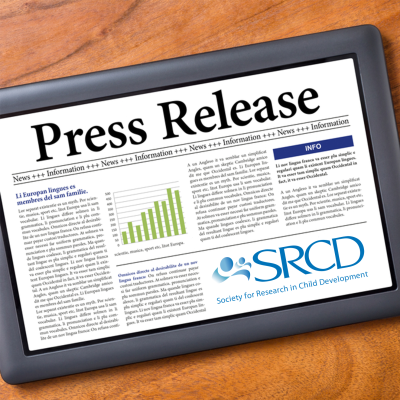Why School Bullying Prevention Programs That Involve Peers May Be Harmful to Victims
PRESS RELEASE / CHILD DEVELOPMENT PERSPECTIVES: Embargoed for Release on October 20, 2020
School bullying has been identified as harmful to students’ mental health. Many studies have evaluated the effectiveness of bullying prevention programs, finding mixed results in general and no benefits overall for secondary school students. Looking at the specific components of bullying prevention programs helps to explain the complicated pattern: Unlike intensive programs that include parent training, firm disciplinary methods or improved playground supervision, interventions that involve work with peers tend to lead to increases in bullying. A new review explores why encouraging peers to defend victims may actually cause more harm than good.
The analysis was written by a researcher at the QIMR Berghofer Medical Research Institute and the University of Queensland, Brisbane. It appears in Child Development Perspectives, a journal of the Society for Research in Child Development.
“Many school bullying prevention programs encourage and train peer bystanders (helpers) to get actively involved in assisting with possible instances of bullying,” said Karyn L. Healy, research officer from QIMR Berghofer Medical Research Institute, who authored the analysis. “Although this approach is very common and well-intentioned, there is no evidence that it helps victims. Encouraging peers to actively defend victims of bullying may actually produce adverse outcomes for victims.”
Most research on the effectiveness of bullying prevention programs assumes that each program affects bullying and victimization in a simple and unified way. But many programs combine a range of different strategies and participants, which are likely to produce differential effects.
Healy identified several mechanisms through which bystander interventions that involve peer defense of the victim could increase victimization and distress of victims: 1) by disempowering victims, 2) by reinforcing or provoking bullying, or 3) by eroding broader support for victims by the peer group.
“Having lots of peers involved makes the situation more public, which can be damaging to the social reputation of victims,” said Healy. “Having a trained bystander step in also prevents the victim from handling a situation themselves and may make them look weak in the eyes of the bully. Training students to intervene in bullying also has the potential of leading to overuse of peer defense strategies because of benefits to helpers, such as making helpers feel they have higher status or increasing helpers’ feelings of belonging in school.”
Recent evidence suggests that even when programs are successful in reducing bullying, they may still be harmful to the individual students who are victimized the most. “This could potentially be the case for any program that aims to reduce overall bullying without taking into account the impacts on victims,” explains Healy.
To lessen the risk to vulnerable students, Healy suggests that schools be wary of bullying prevention programs that lack evidence of effectiveness for reducing bullying and victimization. Schools should avoid using strategies that boost peer visibility of victimization (e.g., identifying a victim in a class meeting). In addition, evaluations of bullying prevention programs that look at the school as a whole should be cautious of hidden negative outcomes for individual students who remain victimized.
###
Summarized from Child Development Perspectives, Hypotheses for Possible Iatrogenic Impacts of School Bullying Prevention Programs by Healy, KL (QIMR Berghofer Medical Research Institute and the University of Queensland, Brisbane). Copyright 2020 The Society for Research in Child Development, Inc. All rights reserved.


